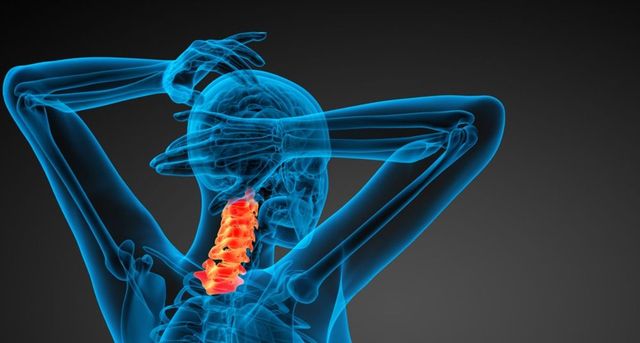Professional Insights from a Top Chiropractor for Lasting Spine Relief
All Concerning Spinal Decompression: Effective Solutions for Spinal Health and Wellness
Spinal decompression treatment has actually emerged as a sensible choice for those looking for alleviation from different spinal problems. This non-invasive therapy targets the origin of pain, such as herniated discs and persistent neck and back pain. Comprehending its applications and principles can lose light on exactly how it promotes general spinal health and wellness. What are the certain advantages and methods associated with spinal decompression? Checking out these concerns may disclose important insights for individuals considering this technique.
Comprehending Spinal Decompression Therapy
Just what is spinal decompression treatment, and how does it function? Spinal decompression therapy is a non-invasive treatment targeted at alleviating pressure on the spine's discs and nerves. It uses customized tools to gently extend the spine, creating negative stress within the discs. This adverse stress assists in the repositioning of herniated or protruding discs and urges the influx of crucial nutrients and fluids into the influenced locations.
Patients commonly lie on a mechanized table that supports the spine while allowing regulated traction. The treatment can target different spinal problems, including persistent back sciatic nerve pain, disc, and discomfort degeneration. Sessions are typically pain-free and can last from 30 to 45 minutes. While lots of patients experience immediate relief, a collection of sessions might be advised for finest results. Generally, spinal decompression treatment represents a holistic approach to spinal wellness, aiming to bring back feature and advertise general health.
The Scientific Research Behind Spinal Decompression
Spinal decompression therapy is based in concepts of biomechanics and physical response to pressure adjustments within the spinal column. This non-invasive treatment aims to ease spinal disc stress, which can add to discomfort and discomfort. By employing traction strategies, spinal decompression develops an unfavorable stress environment within the intervertebral discs. This adverse pressure promotes the repositioning of herniated or protruding discs and promotes the increase of necessary nutrients and fluids, assisting in the healing process.
Research shows that spinal decompression can lead to a rise in disc elevation, which might reduce nerve origin compression. Chiropractor. The treatment additionally intends to improve spinal positioning, potentially boosting general biomechanical function. Comprehending these scientific concepts helps professionals use spinal decompression efficiently, guaranteeing that clients get targeted care customized to their certain spinal conditions. Generally, the science behind spinal decompression underscores its value in the field of spinal health
Benefits of Spinal Decompression
While many individuals seek remedy for persistent neck and back pain, the advantages of spinal decompression extend beyond mere discomfort management. This restorative method aids in improving spinal health and wellness by promoting proper alignment and reducing stress on intervertebral discs. Enhanced circulation is one more remarkable benefit, as spinal decompression promotes far better blood flow to the spine, nourishing surrounding tissues and speeding up recovery procedures.
Additionally, spinal decompression can lead to increased flexibility and enhanced variety of movement, allowing individuals to involve in daily activities with greater simplicity. Lots of people record boosted overall wellness and a decrease in tension levels, as alleviating neck and back pain can greatly boost quality of life.
Moreover, spinal decompression may work as a safety net, helping to avert future spinal issues by preserving ideal spinal feature. In general, the multifaceted benefits of spinal decompression highlight its relevance in advertising long-lasting spinal health and wellness and wellness.
Kinds Of Spinal Decompression Techniques
Various techniques exist for spinal decompression, each developed to alleviate stress on the spine and enhance total health. One usual method is mechanical spinal decompression, which makes use of a traction table to carefully extend the spine, creating unfavorable stress in the discs. An additional approach is hands-on spinal decompression, performed by a chiropractic specialist, that uses regulated force to ease and straighten the spine stress.
Additionally, there are non-invasive therapies such as inversion therapy, where individuals hang upside down to promote spinal elongation. Additionally, workouts that concentrate on enhancing core muscle mass can contribute to spinal assistance and decompression.
Ultimately, some specialists make use of sophisticated modalities like spinal decompression devices, which are engineered to give targeted alleviation. Each method aims to enhance spinal positioning, decrease pain, and boost movement, satisfying the unique requirements of individuals seeking remedy for spinal pain.
What to Expect Throughout a Spinal Decompression Session
During a spinal decompression session, individuals can expect a collection of preparation steps created to ensure their convenience and security. The session itself typically involves a combination of therapeutic methods focused on easing pressure on the spine. Understanding these elements can assist individuals really feel a lot more at simplicity before and throughout the therapy.
Therapy Preparation Tips
As individuals prepare for a back decompression session, they can anticipate a carefully organized process designed to ensure their convenience and safety. Specialists will perform a detailed analysis, assessing medical history and current signs and symptoms to tailor the therapy. Individuals may be recommended to use comfy clothes and get rid of any type of fashion jewelry that might disrupt the procedure. It's likewise usual for clinicians to describe the innovation and techniques utilized in spinal decompression, making certain patients understand the process and its benefits. Additionally, patients may be advised to hydrate sufficiently prior to the session. This prep work intends to develop a desirable environment for spinal health and wellness, allowing patients to feel protected and informed regarding their treatment trip.
Session Experience Review
A spinal decompression session normally unfolds in a calm and regulated setting, where individuals are located conveniently on a specialized table made for the procedure. The expert starts by explaining the procedure, making certain the patient understands each step. When resolved, gentle grip is related to the spine, developing room between the vertebrae to alleviate pressure on the discs and nerves. People may really feel a mild stretching sensation, yet pain must be very little. Sessions usually last concerning 30 to 45 minutes, throughout which the practitioner monitors the patient's action. Afterward, clients might get referrals for Find Out More follow-up care or workouts to improve results. In general, the experience aims to promote relaxation and recovery, fostering a feeling of wellness.
That Can Gain From Spinal Decompression?
Who stands to obtain one of the most from spinal decompression therapy? People dealing with chronic back discomfort, herniated discs, or degenerative disc condition are main candidates for this treatment. Those experiencing sciatica or tingling in the arm or legs might likewise profit greatly, as spinal decompression can aid ease pressure on the spinal nerves. On top of that, professional athletes recouping from injuries or individuals with postural concerns often find alleviation with this therapy.
People seeking a non-invasive alternative to surgical procedure for their spinal wellness concerns may think about spinal decompression as a feasible option. It is crucial for potential prospects to talk to healthcare specialists to establish the appropriateness of this therapy for their certain conditions. Generally, spinal decompression treatment can supply considerable advantages for a diverse series of individuals, improving their total lifestyle and advertising far better spinal health and wellness.
Tips for Maintaining Spinal Health After Treatment
After going through spinal decompression therapy, maintaining spinal health is crucial for long-lasting health. Applying normal workout routines, being mindful of position, and establishing an ergonomic work space can greatly add to a much healthier spine. These techniques not just support recuperation but additionally help avoid future concerns.

Routine Exercise Regimens
Preserving spinal health and wellness complying with treatment is crucial for lasting recovery and general well-being. Normal exercise regimens play a vital role in this process. Taking part in low-impact activities such as swimming, walking, and cycling can assist enhance the muscles sustaining the spine, enhance versatility, and boost overall movement. Incorporating core-strengthening exercises is particularly beneficial, as they provide stability and support to the spine. In addition, gentle stretching routines can alleviate tension and promote leisure in the back muscular tissues. It is crucial to seek advice from a health care professional before beginning any kind of brand-new exercise program to ensure it lines up with specific recuperation objectives. Consistency in these activities fosters a positive method to spinal health and wellness, aiding in the prevention of future problems.
Stance Recognition Techniques
A strong understanding of posture can considerably impact spinal health and wellness during the recovery procedure. Individuals should consciously maintain an upright position, ensuring that the head is aligned with the spine and shoulders are kicked back. Consistently signing in with one's stance throughout the day can aid reinforce great routines. When sitting, making use of a supportive chair that advertises back assistance is important. Additionally, representing extended periods requires weight circulation in between both feet and involving the core muscular tissues. Exercising mild stretches and movement exercises can additionally improve awareness of pose. Mindfulness techniques, such as deep breathing, can aid in identifying tension and promoting relaxation in the back. Applying these strategies promotes an aggressive approach to spinal wellness post-treatment.
Ergonomic Work Area Configuration
While an ergonomic office may look like a luxury, it is vital for those recuperating from spinal concerns. A well-structured atmosphere can considerably help in keeping spinal health and wellness. Trick components consist of a chair with lumbar assistance, which encourages correct stance, and a workdesk height that permits joints to rest at a 90-degree angle. In addition, computer displays must go to eye level to reduce neck stress. Regular breaks to extend and stand are essential, as extended resting can aggravate pain. Foot rests can also boost blood circulation and reduce pressure on the lower back. By focusing on these ergonomic concepts, individuals can develop an encouraging work space that promotes recovery and advertises lasting spinal health, ultimately boosting total productivity and convenience.
Frequently Asked Concerns
How Much Time Does Spinal Decompression Therapy Commonly Take to Program Results?
Spinal decompression therapy usually takes a number of weeks to reveal recognizable results. A lot of clients experience renovation within 4 to 6 weeks, relying on specific conditions and adherence to the advised therapy strategy outlined by healthcare professionals.
Exist Any Type Of Negative Effects Linked With Spinal Decompression Treatment?
Spinal decompression therapy might create light side effects, such as short-lived discomfort, muscle spasms, or pain after therapy. Nevertheless, these symptoms are typically check my site brief and deal with quickly, enabling individuals to proceed their treatment efficiently.
Can Spinal Decompression Treatment Be Done in the house?

Is Spinal Decompression Safe for Expectant Women?
Spinal decompression is normally thought about risky for pregnant females as a result of potential dangers. It is vital for pregnant mommies to get in touch with healthcare experts prior to undertaking any type of spinal therapies to guarantee the security of both mom and baby.
Just how Typically Should I Go Through Spinal Decompression Therapy for Finest Outcomes?
Normally, people need to go through spinal decompression treatment a couple of times a week for ideal results. Nonetheless, the regularity might differ based upon specific problems and ought to be established by a medical care find more info expert.
Spinal decompression treatment is based in principles of biomechanics and physical reaction to pressure modifications within the spinal column. Comprehending these scientific concepts helps specialists apply spinal decompression properly, making certain that people obtain targeted treatment tailored to their details spinal conditions. Spinal decompression might serve as a preventive step, assisting to avert future spinal problems by preserving ideal spinal feature. People looking for a non-invasive alternative to surgery for their spinal health problems might think about spinal decompression as a viable alternative. After undertaking spinal decompression therapy, preserving spinal health is vital for long-term health.